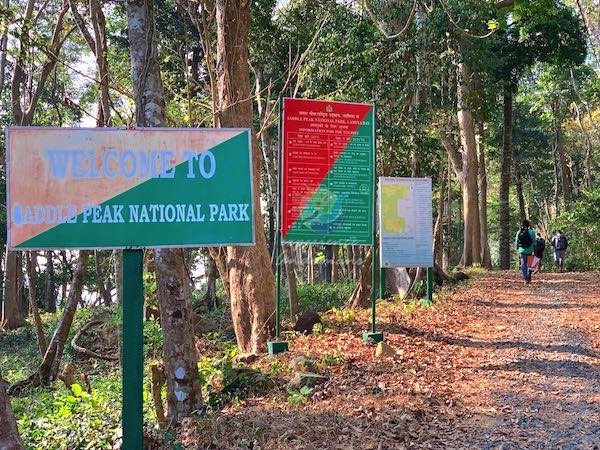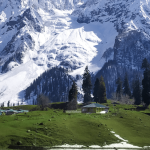3 Best Limestone Caves in Andaman and Nicobar Islands
If you are planning an Andaman Trip, then of course the sandy beaches, lush tropical forest, and far-stretched blue ocean are going to greet you with pleasant and adventurous experiences. But if you want to explore beyond the ordinary and go offbeat, then you must explore the limestone caves in Andaman.
The lush forests and the breathtaking beaches of Andaman are a paradise for nature enthusiasts. However, there’s more to this tropical haven than meets the eye. The Andaman Islands are home to a series of remarkable natural formations, known as limestone caves, which have fascinated explorers and researchers for generations.
In this blog, we will tell you all about the limestone caves in the Andaman and Nicobar Islands so that you can plan to embark on this adventurous experience deep within the earth to uncover the mysteries of Andaman’s limestone caves.
Formation of the Limestone Caves in Andaman

The limestone caves in the Andaman and Nicobar Islands are extraordinary natural wonders to explore. Over millions of years, these caves have taken shape through a process known as chemical weathering. Rainwater, slightly acidic due to dissolved carbon dioxide, seeps into the ground, interacting with the limestone rock.
As the water trickles through the rock, it gradually dissolves the limestone, creating tunnels and chambers. This slow but persistent erosion action led to the development of the mesmerizing caves we see today. It’s a process where nature’s patience and the rock’s vulnerability come together to craft these underground marvels.
Stalactites and stalagmites, which hang from the cave ceilings and rise from the cave floors, are a testament to the ceaseless work of water and time. The deposits of minerals from the water create these stunning formations, giving the caves their unique and otherworldly appearance.
The limestone caves in Andaman are more special as they also have amazing stalactite and stalagmite formations that appear in various intersecting shapes and formations. So, let’s discover some amazing limestone caves to visit in Andaman to witness this natural wonder.
Also Read: Barren Island, Andaman – Guide To India’s Only Active Volcano
Limestone Caves in Andaman
Andaman and Nicobar Islands are blessed with several limestone caves across the islands. Following are the most popular limestone caves that are also easily accessible, due to which tourists and adventurers get an opportunity to explore these cave systems. Understand how to reach these limestone caves and why are they so popular.
1. Limestone Caves in Baratang Island

Baratang Island is home to some of the most iconic limestone caves in the Andaman and Nicobar Islands. These remarkable caves are known for their unique geological formations and the lush green surroundings that surround them. Baratang Island’s limestone caves are one of the best places to visit the Andaman and Nicobar Islands.
Reaching these limestone caves on Baratang Island is an adventure in itself. From Port Blair, you will have to embark on a 1-hour ferry ride which greets you with mesmerizing views. As you get near Baratang Island, your boat passes through the dense mangroves, surrounded by the sights and sounds of the lush greenery. This boat ride is an experience in itself as you navigate the picturesque waterways.
Once you’ve reached your destination, a short but invigorating hike awaits you (approx 45 mins). The trek through the island’s natural beauty is part of the thrill. As you follow the trail, you’ll eventually enter the caves and discover an underground world of wonder. Inside, the stalactites and stalagmites will leave you in awe with their intricate formations, a result of water’s patient hard work over countless years.
These caves also host bioluminescent organisms like glowworms, which illuminate the darkness with their soft, ethereal glow. It’s a mesmerizing natural light show that adds a touch of magic to your cave exploration.
2. Alfred Caves near Diglipur

Alfred Caves, situated near Diglipur, is not only a geological wonder but also a tribute to historical exploration. These caves are named after Alfred Wayman, a British geologist who explored them in the 19th century. A visit to Alfred Caves is like stepping back in time to an era of scientific discovery and natural beauty.
To reach these caves, you’ll need to make your way to Diglipur first, which is accessible by road and sea from Port Blair, the capital of the Andaman and Nicobar Islands. The distance from Port Blair to Diglipur is 300 km which can be covered in 8 hours. The ferry from Port Blair to Diglipur departs every Wednesday and Saturday at 7 AM from Diglipur Jetty and takes around 11-12 hours to reach Diglipur.
Once in Diglipur, a relatively short trip 35 km south from the city center of Diglipur will take you to the entrance of Alfred Caves. As you step inside, you’ll be greeted by the breathtaking limestone formations that have been shaped over centuries. The cave’s history, intertwined with scientific curiosity and natural beauty, makes this visit an educational and visually stunning experience.
3. Saddle Peak Caves
Saddle Peak Caves are nestled amidst the dense forests of the Andaman Islands, close to Saddle Peak, the highest point in the archipelago. These caves offer an enchanting journey into the heart of the island’s wilderness. Exploring the Saddle Peak Caves is like entering a world where time stands still, and nature’s artistry takes center stage.
To reach these caves, you’ll have to follow the same route mentioned above till you reach Diglipur. From Diglipur you can drive to the Saddle Peak National Park, which is approximately 22 km.
Upon reaching, you will have to take a small hike through the lush forest of this National Park in Andaman. This journey itself is an adventure, offering glimpses of the island’s rich biodiversity and natural beauty.
Upon reaching the Saddle Peak area, you can explore these caves, which are known for their unique geological formations and the experience of walking through them is a truly immersive one. The silence and tranquility within the caves are striking, making it an ideal place for introspection and appreciation of the beauty that lies beneath the earth’s surface.
When planning a visit to the Saddle Peak Caves, remember to be prepared with suitable gear, including headlamps or flashlights, sturdy footwear, and, if possible, a local guide to enhance your experience and ensure a safe exploration of these hidden treasures.
Travel Tips For Limestone Caves in Andaman

To get the most out of your visit, here are some travel tips for Andaman’s limestone caves exploration:
Best Time To Visit Limestone Caves in Andaman
The best time to visit limestone caves in Andaman and Nicobar Islands is during the dry season, which stretches from November to April. This period offers the most favorable weather conditions and ensures a safe and enjoyable cave exploration experience. The weather is generally pleasant, and the seas are calm, making it the ideal time to embark on your adventure. To make the most of your trip and to witness the beauty of these natural wonders, plan your visit during this dry season.
Essential Gear for Cave Exploration
When embarking on a cave expedition in the Andaman Islands, it’s crucial to be well-prepared. Here’s a list of essential gear to ensure your safety and enjoyment:
- Headlamps or Flashlights: These are necessary for navigating the dark interiors of the caves. Make sure to bring extra batteries to avoid any inconvenience.
- Sturdy Footwear: Opt for high-quality hiking shoes with a firm grip to safely navigate the sometimes slippery cave floors.
- Protective Clothing: Wear comfortable clothing that you don’t mind getting dirty, as caves can be muddy. Consider bringing a light rain jacket to protect against dripping water.
- First Aid Kit: Always carry a basic first aid kit that includes essentials like band-aids, antiseptic wipes, and pain relievers.
- Water and Snacks: Staying hydrated is crucial during your cave exploration, so carry sufficient water. Energy-boosting snacks like granola bars or dried fruits can keep you energized.
Entry Fees & Timings
There are no entry fees to the caves. But the boat ride charges that take you through the mangroves to reach the caves are around ₹800 per person. The timings to enter the caves may vary, but these caves are open during daylight hours.
Other general travel tips to keep in mind in pointers
Here are some additional travel tips to keep in mind:
- These caves are delicate ecosystems, so please do not touch the formations, leave litter, or disrupt the natural environment. Conservation is key to preserving the beauty of the caves for future generations.
- Maintaining silence within the caves is not just a courtesy but also a way to fully appreciate the tranquility and natural sounds of the underground world.
- Always prioritize safety during your cave exploration. Follow safety guidelines, use proper gear, and listen to your guide’s instructions.
- If you plan to take photographs, ensure your camera or smartphone has sufficient battery and storage space. Capture the memories but also take time to immerse yourself in the experience without distractions.
- Make travel and accommodation arrangements well in advance to ensure a smooth trip, especially during the peak season.
- It’s highly recommended to hire a local guide who knows the caves well. They can provide valuable insights, enhance your cave experience with their knowledge of the local history and geology, and, most importantly, ensure your safety.
By following these tips and respecting the caves and their environment, you can have a safe, memorable, and environmentally responsible adventure while exploring the limestone caves in the Andaman and Nicobar Islands.
Frequently Asked Questions For The Limestone Caves in Andaman
What are limestone caves?
Limestone caves, also known as karst caves, are natural underground formations made of limestone rock. These caves are characterized by unique geological structures, including stalactites and stalagmites, and often host a fascinating ecosystem of bioluminescent organisms.
How are limestone caves formed?
Limestone caves form through a process called chemical weathering. Rainwater, slightly acidic due to dissolved carbon dioxide, seeps into the ground and reacts with the limestone rock. Over millions of years, this interaction dissolves the limestone, creating tunnels and chambers, resulting in the captivating cave systems we see today.
Where can limestone caves be found?
Limestone caves can be found in various locations within the Andaman and Nicobar Islands. Notable locations include Baratang Island, Alfred Caves near Diglipur, and Saddle Peak Caves, each offering its own unique geological formations and natural beauty.
What can visitors expect to see in limestone caves?
Visitors can expect to see stunning geological formations, including stalactites and stalagmites, created over centuries by mineral-rich water dripping from the cave ceilings. Additionally, some caves host bioluminescent organisms like glowworms, which provide a magical light show in the darkness, creating a truly unique and enchanting experience for those exploring these underground wonders.






